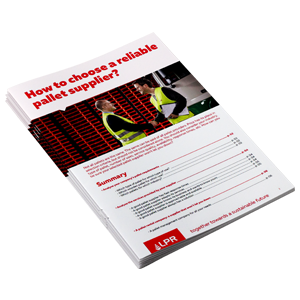Sustainability and environmental accountability have become pivotal concerns, prompting companies to reassess their practices and operational frameworks.
In this context, retailers are adapting their approaches and seeking to incorporate more circular methods to replace specific processes in their supply chain.
Instead of adhering to traditional linear patterns of production, consumption, and disposal, circular approaches strive to establish an ongoing cycle in which resources are reused, repaired, and recycled, thus reducing waste and environmental impact.
In this article, we will explore four instances of circular approaches that you can incorporate into your supply chain. These examples will demonstrate how embracing circularity can enhance the sustainability of your supply chain while also creating economic and social advantages across all levels.
Menu:
1 | Designing environmentally friendly transportation and handling packaging
2 | Sustainable sourcing: implementing a sourcing policy
3 | Reverse logistics: managing your transport packaging
4 | Choosing a sustainable mode of transport
1. Designing environmentally friendly transportation and handling packaging
1.1. What is environmentally friendly design?
Unlike the conventional approach to packaging design, which prioritises practicality and cost reduction, environmentally-friendly design is a methodology focused on minimising the environmental footprint of packaging throughout its entire lifecycle.
Step 1: Choosing the material
The benefits of environmentally friendly design primarily revolve around the selection of materials used.
A material aligned with the principles of environmentally friendly design is one that is:
-
Durable: this implies that it has minimal environmental impact and enables the responsible management of the resources from which it originates.
-
Reusable or recyclable: this means that it can easily be repaired or recycled.
As an example, at LPR, the wood chosen for crafting our pallets hails from PEFC-certified forests. This signifies that it originates from well-managed forests, where ecosystem protection is paramount, and reforestation is guaranteed.
Step 2: Reuse and recycling of packaging
Eco-design implies that product packaging can be reused multiple times and/or recycled to extend its lifecycle as much as possible.
-
Reuse
Reuse involves incorporating recovery and maintenance processes into your supply chain.
The process is straightforward. You'll need to retrieve your packaging at the end of the supply chain, perform inspections and cleaning, and then allow it to be reintroduced into your warehouses for subsequent transfers and shipments of goods.
If preferred, you can outsource the management and maintenance of your pallets to a service provider, enabling you to focus on other, more strategic elements of your supply chain.
-
Recycling
Not all reusable packaging can be easily recycled!
After multiple uses, some may need to be discarded, and the disposal process can sometimes have a negative impact upon the environment, such as the release of toxic gases when packaging is incinerated.
Environmentally friendly design, as an approach, incorporates recycling considerations into packaging creation, ensuring that all packaging at the end of its lifecycle can either be repurposed into other products or disposed of in an environmentally responsible manner.
However, the recycling process for packaging often necessitates the separation of materials (cardboard, plastic, metal) for individual treatment and reintroduction into the production of new packaging or other goods.
You can play a pivotal role in promoting the selective collection of used packaging within your supply chain and collaborating with recycling facilities to ensure their proper treatment.
-----
In conclusion, incorporating packaging reuse and recycling processes into your supply chain is essential for achieving circularity.
When combined with other approaches, recycling contributes to the creation of more sustainable and robust supply chains that can endure for generations to come.
1.2. Optimise your supply chain thanks to environmentally friendly design
Beyond the positive environmental effects of environmentally friendly design, such as waste reduction and a smaller carbon footprint, this approach offers additional advantages for your supply chain:
-
Cost reduction: By reusing the same packaging, you will no longer have to experience cost fluctuations often associated with purchasing single-use packaging.
-
Strengthening your brand image: Embracing reuse enhances your corporate image as a responsible company and bolsters your market positioning as a committed player dedicated to resource conservation.
-
Better performance: When you delegate the collection and maintenance of your packaging to a service provider, you can focus on high-value tasks instead, leaving the rest in capable hands.

2. Sustainable sourcing: implementing a sourcing policy
Incorporating a circular approach into your supply chain involves selecting and partnering with like-minded partners and suppliers who share your commitments.
By deploying a sustainable sourcing policy, you can ensure that:
-
sustainability drives all your supply chain processes.
-
circular practices are realised by all stakeholders in your supply chain.
To achieve this, we recommend establishing evaluation criteria that go beyond cost:
-
Prioritise suppliers who favour eco-responsibility, innovation, quality, and the use of environmentally friendly materials and products.
-
Ensure that suppliers maintain high ethical and social standards within their businesses.
-
Give preference to local partners to encourage the use of short supply chains, which reduces transportation distances and carbon emissions, while also stimulating the local economy.
-
Analyse the carbon footprint of your suppliers to minimise the overall environmental impact of your supply chain.
To delve deeper into this topic, here's a practical example that can serve as a blueprint for shaping your sustainable sourcing policy: LPR's approach to wood sourcing.
3. Reverse logistics: managing your transport packaging in alignment with circular economy principles
Reverse logistics is a term that refers to the administration of product or packaging flow as it moves back through the supply chain, whether due to product returns, recycling, repair, or reuse.
Instead of resorting to single-use packaging or following management models like pallet exchange, you can use returnable packaging.
This approach allows you to optimise packaging management while aligning with the principles of the circular economy.
Effectively managing your returnable packaging can be accomplished in three steps:
3.1. Collect your reusable packaging
Implement a collection system to retrieve your transport packaging at the conclusion of the supply chain.
Continuing in line with a circular approach, it's essential to engage in partnerships with handling warehouses in proximity to your distributors. This minimises empty kilometres, increases the efficiency of your transportation, and helps reduce greenhouse gas emissions from your supply chain.
3.2. Evaluate, sort, repair your returnable packaging
Examine the recovered packaging to assess the appropriate treatment: whether it requires cleaning, repair, or recycling.
Implement an efficient handling system that enables the evaluation of your packaging's condition upon return, facilitating the necessary treatment.
This might entail partnering with logistics providers specialised in packaging recovery or implementing deposit systems for reusable containers.
3.3. Re-inject the packaging
That’s it! Your packaging has been cleaned and restored, ready to be reintegrated into your supply chain for transporting new goods.
As you've grasped, by implementing an effective recovery and handling system for your returnable packaging, you maximise the number of times they can be used, contributing to the circularity of your supply chain.
—
In the end, the reverse logistics of transport packaging not only lowers the expenses linked to continual packaging purchases but also plays a substantial role in waste reduction.
Hence, reverse logistics stands as a pivotal component of any circular supply chain strategy.
4. Choosing a sustainable mode of transport: one more step towards the circular economy
Choosing an eco-friendly transportation mode and streamlining your transport routes is another means of aligning your supply chain with a more responsible approach.
Currently, innovative solutions are available that help mitigate greenhouse gas emissions associated with conventional transportation methods.
Some of these solutions include:
Multimodal transport
Multimodal transport represents a significant advantage in the quest for more sustainable supply chain solutions.
By integrating various transportation modes such as road, rail, sea, and air, it enhances efficiency while minimising environmental impact. This approach enables the selection of the most suitable transport mode for each leg of the journey, considering factors like cargo type, distance, and logistical constraints.
Multimodal transport offers valuable flexibility while aiding in the reduction of greenhouse gas emissions, as it allows for the prioritisation of eco-friendly transport modes whenever feasible.
Road transport: innovative approaches to mitigate its impact
Road transport remains one of the most used means of transport for the transport and delivery of goods. Between innovation and new practices, it is now possible to limit the environmental impact:
-
New generation trucks: Electric, compressed natural gas (CNG) powered, and even bio-fuel-fuelled trucks from the new generation are demonstrating their effectiveness in the market, enabling a reduction in the environmental footprint of road freight transportation.
-
Reduction of empty kilometres travelled: An important aspect of supply chain management involves minimising the distance travelled with empty loads. Frequently, trucks and other transport vehicles return to their origin without load, leading to significant resource wastage.
Therefore, by enhancing the load capacity of vehicles at each leg of their journey, it becomes possible to conserve fuel and make more efficient use of transport infrastructure. This offers both economic and environmental advantages for your supply chain.
Conclusion
In summary, transitioning from a linear mindset to a circular approach enables you to diminish waste and environmental footprints within your supply chain, all while enhancing its efficiency.
From crafting eco-friendly packaging to selecting sustainable transportation modes and implementing a comprehensive returns management strategy, each step plays a crucial role. It is through the integration of various circular approaches that you can effectively revolutionise your supply chain, harmonising operational effectiveness with sustainability.
Our teams are available to assist you and ensure a smooth transition towards making the change. Contact us today!




